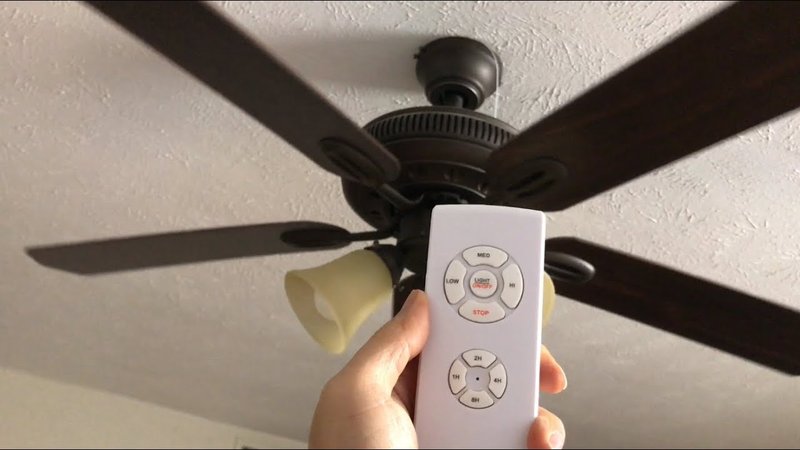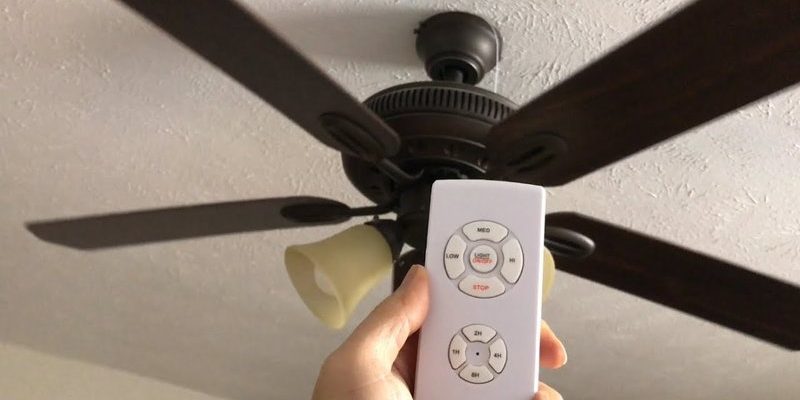
If you’re scratching your head, remote in hand, wondering why only the *light function* on your Lutron remote is ignoring you while the fan still spins, you’re not alone. This isn’t just you missing a battery or hitting the wrong button—there are several sneaky culprits. Let’s dig right in, figure out what’s going on, and get those lights shining again.
Common Reasons the Lutron Remote Light Button Stops Working
The first instinct is to blame the remote itself, but here’s the thing: the problem can hide in a few unexpected places. Sometimes, the issue is with the remote. Other times, the ceiling fan or the way the light is wired throws a wrench into the works.
Batteries are the simplest culprit. If your Lutron remote’s battery is dying, the remote might still have enough juice to send fan commands but not enough power for the light function. It’s a little like having a car that can creep along in first gear but can’t quite muster enough engine power to climb a hill.
Then there’s the code or pair mechanism between the remote and the fan. Lutron remotes and receivers need to ‘know’ about each other—sort of like secret handshakes for electronics. If this syncing goes awry, the commands for the light may not register, even if the fan still listens.
Another sneaky issue is with the light kit wiring inside the fan. Sometimes, especially after power surges or installation tweaks, the connections to the fan’s light get loose or disconnected. The remote sends the “turn on” signal, but the fan’s light kit can’t respond if it’s not properly connected.
Lastly, there’s always the chance of a malfunctioning receiver. This is the part inside your fan that interprets signals from your Lutron remote. These receivers can be fussy—sometimes only on the light circuit—resulting in a fan that spins but a light that never comes on.
How Lutron Ceiling Fan Remotes Communicate with Your Fan and Light
Here’s a little behind-the-scenes look: Your Lutron ceiling fan remote talks to a receiver tucked away in the fan housing. Think of the receiver as a translator—taking your button pushes and converting them into actions for the fan and light.
The remote uses either RF (radio frequency) or IR (infrared) signals. Lutron models almost always use RF, which is handy because you don’t actually have to point the remote at the fan—perfect for those of us who lose remotes in couch cushions.
Pairing (sometimes called syncing or programming) is how your remote and receiver get on the same page. There’s a “code” they use to make sure one remote doesn’t start controlling your neighbor’s fan. If the pairing gets lost or scrambled—which can happen after power outages, battery changes, or even electrical noise from nearby devices—some functions may stop working.
If your remote works for the fan but not the light, it’s almost always a communication or wiring hiccup between the remote and the ceiling fan’s receiver.
Light functions sometimes fail independently because the receiver actually splits the signals: one circuit for the fan, one for the light. If the light side fries out, you get this odd split-personality fan.
How to Troubleshoot a Lutron Ceiling Fan Remote Light Problem
When the light on your Lutron remote refuses to cooperate, you don’t need an engineering degree—just a little patience and a checklist. Here’s a sequence to follow, like baking a cake but with fewer calories and more wires.
- Check the batteries: Always the first step. Swap in fresh ones. Weak batteries often can’t provide enough power for both fan and light signals, especially over distance.
- Inspect the remote buttons: Sometimes the light button gets sticky or worn. Press it firmly and listen for a click. Try toggling it several times.
- Test other remote functions: If the fan controls work but the light controls don’t, the problem is likely not with the batteries but the receiver or light kit.
- Reset or re-pair the remote: Refer to your Lutron manual for the pairing process. Usually, this involves holding down a button on the remote while flipping the power on and off at the switch. This code sync can refresh the connection.
- Check the wall switch: Make sure any physical switch controlling the fan or light isn’t turned off or stuck in a halfway position.
- Inspect the fan’s light kit wiring: If you’re comfortable with basic electrical work, turn off the power and open the fan canopy to check for loose wires. Look for disconnected or burned wires. (Don’t try this unless you know how to safely handle electrical fixtures!)
If none of these steps fix it, the receiver may be malfunctioning, or the light bulb/socket could be defective. Swap the bulb just to rule out an easy fix.
Resetting and Re-Pairing Your Lutron Ceiling Fan Remote
This part often feels like a secret dance with your ceiling fan, but it’s actually pretty straightforward. Most Lutron ceiling fan remotes have a reset or pair feature—think of it as starting from scratch, like rebooting your phone when it acts up.
Here’s a typical way to reset and pair:
- Turn off power to the fan at the breaker or wall switch. Wait about 10–15 seconds.
- Restore power. Within 30 seconds, hold down the remote’s “Fan Off” or “Light” button. This can vary, so always check your specific model’s manual.
- Wait for confirmation: sometimes the fan will spin briefly or the light will blink to show that pairing was successful.
- Test both the fan and the light buttons. If the light function was out of sync, this process often fixes it.
If your remote uses a dip switch code (tiny levers inside the battery compartment), make sure these switches match between remote and receiver. Even one switch out of alignment and nothing will work, no matter how many times you push the button.
Pairing issues are especially common after power outages, so if your remote stopped working after a storm or someone toggled the breaker, a quick re-sync is almost always worth a try.
What If the Fan Works but the Light Still Won’t Respond?
You might be wondering—is it possible for only the light control to break? Absolutely. Here’s why that happens: the receiver splits the incoming signal into separate circuits for the fan and the light. If there’s a problem on the light side (like a short, burn-out, or fried component), the fan keeps working as if nothing happened.
Sometimes the problem is as simple as a burned-out bulb, or a bulb that’s not compatible (especially with dimming functions). Lutron fans often use specialty bulbs, so check which type your model requires. Swapping out an LED for an incandescent or vice versa can sometimes do the trick.
It’s also possible that the light socket contacts are bent or corroded. Take out the bulb, check the socket for visible damage, and carefully clean it. Use caution and turn off power at the breaker before poking around.
If the socket, bulb, and wiring all look good, the receiver might need replacing. Receivers are not especially expensive, but replacing them can be a bit fiddly—sometimes requiring you to take down the fan from the ceiling. If that sounds daunting, calling a professional electrician isn’t a bad idea (and definitely safer).
Comparing Lutron Remote Controls Versus Universal Remotes
Here’s where things get interesting. Many people try using universal ceiling fan remotes as a quick fix, thinking all remotes are created equal. Unfortunately, Lutron’s proprietary technology means that not every universal remote will play nicely.
Lutron remotes are designed to match a specific code and frequency. Universal remotes often have a broader frequency range but can miss some features—like dimming or light control. So, if your universal remote controls the fan but not the light (or vice versa), you’re running into a compatibility issue.
- Lutron remote: Better reliability, full function control, and easier troubleshooting. Replacement remotes are a little pricier, but worth it for peace of mind.
- Universal remote: Cheaper and easier to find, but may not support all advanced features. Pairing is often trickier, especially with Lutron systems.
If your original Lutron remote fails and you need a replacement, always check that the new remote is compatible with your specific fan model and receiver code. Mixing different brands or incompatible codes is like trying to use a car key in your front door—close, but no luck.
When to Replace the Lutron Remote or Call for Help
Even after all this troubleshooting, sometimes the only thing left is to cut your losses and get a new remote or receiver. If the light function is unresponsive after resetting, syncing, changing batteries, and checking wiring, you’re likely dealing with a failed hardware component.
Lutron remotes are generally sturdy, but constant use, dropping, or exposure to moisture can cause them to wear out. If you find the remote’s other buttons getting sticky or the signal range shortening, it’s time for a replacement.
Receiver replacement is more involved. You’ll need to turn off power at the breaker, lower the fan, and swap the module. Definitely not a Saturday project if you’re not handy with electrical stuff. In these cases, it’s safer (and more relaxing) to call a local electrician who can diagnose and swap parts quickly.
If your fan and light system is still under warranty, check with Lutron support. They’re known for responsive customer service, and sometimes they’ll walk you through remote troubleshooting over the phone or send a replacement part directly.
Preventing Future Issues with Your Lutron Ceiling Fan Remote Light Function
A little maintenance can go a long way. Here’s how you can save yourself from future headaches:
- Change the batteries regularly: Don’t wait for the remote to die. Swap out batteries every year, even if they seem fine.
- Keep the remote clean: Wipe down the buttons occasionally with a soft cloth. Gunk buildup can make the contacts fail, especially on the most-used buttons (like the light).
- Don’t overload the light kit: Use only bulbs that match the wattage and type specified in your fan’s manual. Overloading can fry circuits over time.
- Test after power surges: Big storms or flickering can scramble the receiver. If you notice odd behavior after a power outage, re-sync right away to prevent longer-term confusion.
Honestly, a little attention every now and then keeps your fan and light setup breezy and bright for years.
Quick, regular check-ins on your Lutron ceiling fan remote mean you’ll spend less time troubleshooting and more time relaxing under that perfect glow.
Wrapping Up: Getting Your Ceiling Fan Light Back on Track
Remote-controlled ceiling fans are meant to make life easier—not throw you into the dark. When the light function on your Lutron ceiling fan remote isn’t responding, it can be anything from a tired battery to a stubborn receiver or even just a bad bulb. The good news? Most fixes are simple, and methodical troubleshooting usually does the trick.
Think of this as a chance to get to know your gadgets a little better (or at least the insides of your ceiling fan). Whether you tame the problem solo or call in a pro, you’re taking the right steps. Next time you reach for the remote, you’ll click with confidence—and enjoy the light exactly when you want it.
